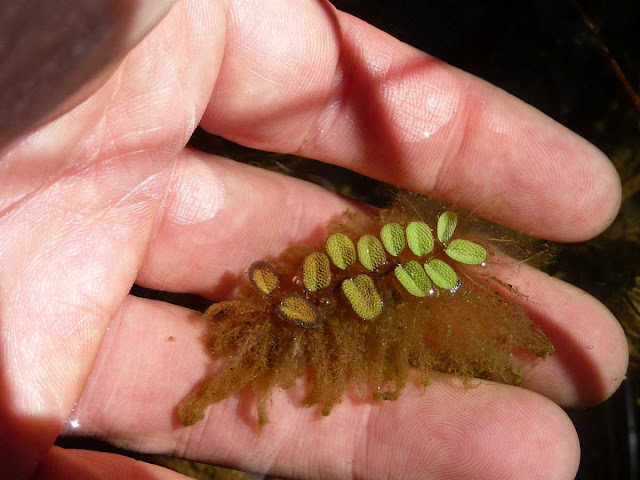Art Nouveau Spirodela polyrhiza.
Watercolor and color pencils on paper 21x30 cm.
«I learned this, at least, by my experiment;
that if one advances confidently in the direction of his dreams, and endeavors to live the life which he has imagined, he will meet with a success unexpected in common hours. He will put some things behind, will pass an invisible boundary;
new, universal, and more liberal laws will begin to establish themselves around and within him; or the old laws be expanded, and interpreted in his favor in a more liberal sense, and he will live with the license of a higher order of beings.
In proportion as he simplifies his life, the laws of the universe will appear less complex, and solitude will not be solitude, nor poverty poverty, nor weakness weakness. If you have built castles in the air, your work need not be lost; that is where they should be. Now put the foundations under them».
-- Henry D. Thoreau, Walden (1845)
__________________________________________________________________
«Έμαθα αυτό τουλάχιστον, από το πείραμά μου,
ότι αν κανείς προχωρήσει με πεποίθηση στην κατεύθυνση των ονείρων του, και πασχίσει να ζήσει τη ζωή που έχει φανταστεί, θα συναντήσει μια επιτυχία αναπάντεχη και ασυνήθιστη. Θα αφήσει κάποια πράγματα πίσω του, και θα περάσει ένα αόρατο κατώφλι.
Καινούριοι, συμπαντικοί, και πιο φιλελεύθεροι νόμοι θα αρχίσουν να καθιερώνονται γύρω και μέσα του, ή οι παλιοί νόμοι θα διασταλλούν, και θα ερμηνευθούν υπέρ του με έναν πιο φιλελεύθερο τρόπο, και θα ζει με τον τρόπο μιας ανώτερης τάξης όντων.
Αναλογικά, καθώς απλουστεύει τη ζωή του, οι νόμοι του σύμπαντος θα εμφανίζονται λιγότερο πολύπλοκοι, και η απομόνωση δεν θα είναι μοναξιά, ούτε η φτώχεια φτώχεια, ούτε και η αδυναμία αδυναμία. Αν έχεις κτίσει κάστρα στον αέρα, δεν είναι αναγκαίο να χαθεί ο μόχθος σου - εκεί έπρεπε να είναι, στον αέρα. Τώρα μπορείς να βάλεις, από κάτω, τα θεμέλια».
-- Henry D. Thoreau, Walden (1845)




















































